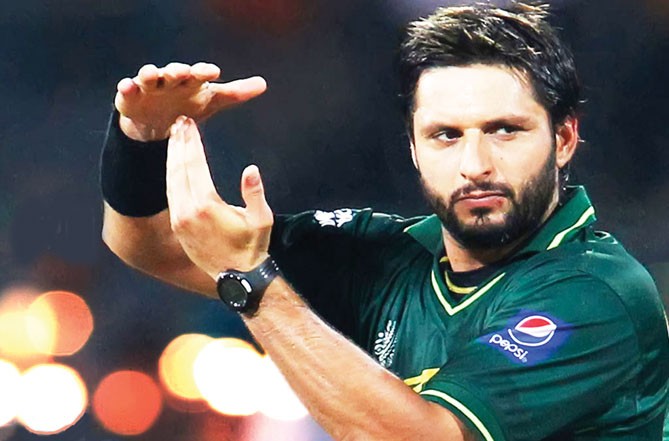

It has been a normal practice of our cricket stars to announce retirement and then join the national team if and when the opportunity arises.
The great Imran Khan did it in 1987 but took the decision back on the persuasion of military dictator General Zia-ul-Haq.
Our most talented wicketkeeper Rashid Latif did the same in mid-‘90s. Mohammad Yousuf announced retirement in March 2010 but then gleefully joined the team in England during the summer tour.
Shahid Afridi announced his retirement from Test cricket in 2006 but reversed the decision in 2010 when he was asked to lead the side in England. He again announced retirement after the first Test against Australia.
This year, Afridi announced retirement from ODI cricket after the World Cup and has made public his intention to stop playing T20 Internationals as well after the next year’s World T20.
One can’t say if these decisions will last. But if they do, we have an occasion to appraise the career of our biggest cricket star (I am not saying the greatest cricketer).
Initially selected as a leg spinner in place of Mushtaq Ahmad during the tour to Kenya in 1996, he shot to fame by making the fastest ODI century, a record that lasted about 18 years.
In the next match, against South Africa, he took three wickets when no other bowler was successful.
This all-round ability made him a permanent member of the ODI squad as he was expected to shine at least in one department, in bowling if not in batting. Since his debut, he had been nearly permanent in the Pakistan ODI team.
He ended his career after playing 398 matches. He could have reached the milestone of 400 had the team qualified for the final of the World Cup, but unfortunately that did not happen.
If one considers his batting and bowling separately, one will reach the conclusion that he could not play so long for the country only as a spinner or only as a batsman.
How can somebody with an average of less than 24 runs survive in any international team as a batsman! Despite playing in the top order for a very long time, he managed to score only four centuries (His last two centuries came when he played as a lower order batsmen).
He won man-of-the-match awards as many as 32 times. He is fifth on the list of players with most awards. But one must also look at the number of matches which Pakistan lost owing to his irresponsible shot selection. I am sure the number will be much higher.
He was seldom a match-winning bowler before the 2011 World Cup in which he was the joint highest wicket taker with Zaheer Khan, having dismissed 21 batsmen.
He gave two really memorable all-round performances after that. He scored 75 and took five wickets against Sri Lanka at Sharjah in 2011; and scored 76 and grabbed seven wickets against West Indies in 2013.
But in T20 cricket, he proved himself a much better player. The format suits players like him. Whereas his average of 23 in ODIs is really poor, his average of 18 in the shortest format is good enough, particularly because by the time T20 cricket started he had become what he should have been from day one: a bowling all-rounder rather than a batting all-rounder.
The 2009 World T20 was his best event. He scored at an average of 35 and took 11 wickets from seven matches.
In the semi-final, against South Africa, by scoring 51 runs and taking two wickets. In the final, against Sri Lanka, he took one wicket and later scored a match-winning 54 runs. In both these matches, he claimed the man of the match awards.
If he is able to lead the team to victory in India next year, he will surely get from the nation what Imran Khan did after his 1992 triumph.